Advertisements
Advertisements
प्रश्न
Why do the electric field lines never cross each other?
उत्तर
The tangent to a line of electric field at any point gives the direction of the electric field at that point. If any two lines of electric field cross each other, then at the intersection point, there would be two tangents and hence two directions for electric field, which is not possible. Hence, the electric field lines do not cross each other.
संबंधित प्रश्न
Why do the electrostatic field lines not form closed loops?
- An electrostatic field line is a continuous curve. That is, a field line cannot have sudden breaks. Why not?
- Explain why two field lines never cross each other at any point?
Which among the curves shown in the fig. cannot possibly represent electrostatic field lines?
(a)

(b)

(c)
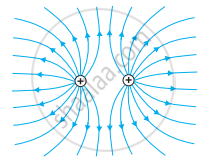
(d)
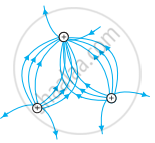
(e)
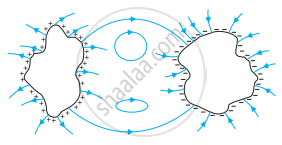
(a) Derive an expression for the electric field E due to a dipole of length '2a' at a point distant r from the centre of the dipole on the axial line.
(b) Draw a graph of E versus r for r >> a.
(c) If this dipole were kept in a uniform external electric field E0, diagrammatically represent the position of the dipole in stable and unstable equilibrium and write the expressions for the torque acting on the dipole in both the cases.
A point charge (+Q) is kept in the vicinity of an uncharged conducting plate. Sketch the electric field lines between the charge and the plate?
The figure shows the field lines on a positive charge. Is the work done by the field in moving a small positive charge from Q to P positive or negative? Give reason.
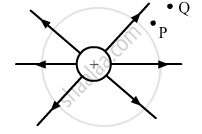
The intensity of the electric field at a perpendicular distance of 0·5 m from an infinitely long line charge having linear charge density (λ) is 3-6 × 103 Vm-1. Find the value of λ.
Draw the pattern of electric field lines, when a point charge –Q is kept near an uncharged conducting plate.
Answer the following question.
Draw the pattern of electric field lines when a point charge +q is kept near an uncharged conducting plate.
Answer the following question.
Derive an expression for the electric field due to a dipole of dipole moment `vec"p"` at a point on its perpendicular bisector.
A point positive charge is brought near an isolated conducting sphere (figure). The electric field is best given by ______.
Figure shows electric field lines in which an electric dipole P is placed as shown. Which of the following statements is correct?
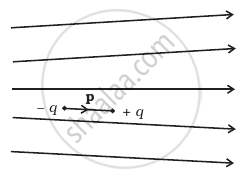
Which of the following figures represent the electric field lines due to a single negative charge?
If Ea be the electric field strength of a short dipole at a point on its axial line and Ee that on the equatorial line at the same distance, then:
An electron enters an electric field with its velocity in the direction of the electric lines of force. Then ______
In figure, two positive charges q2 and q3 fixed along the y axis, exert a net electric force in the + x direction on a charge q1 fixed along the x-axis. If a positive charge Q is added at (x, 0), the force on q1
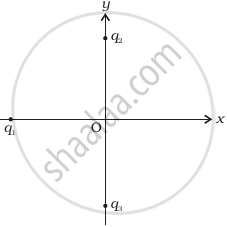 (a) |
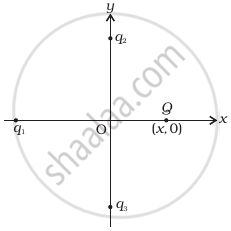 (b) |
Figure shows the electric field lines around three point charges A, B and C.
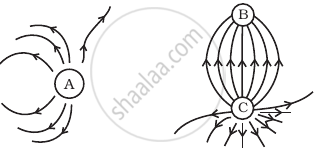
- Which charges are positive?
- Which charge has the largest magnitude? Why?
- In which region or regions of the picture could the electric field be zero? Justify your answer.
(i) near A, (ii) near B, (iii) near C, (iv) nowhere.
